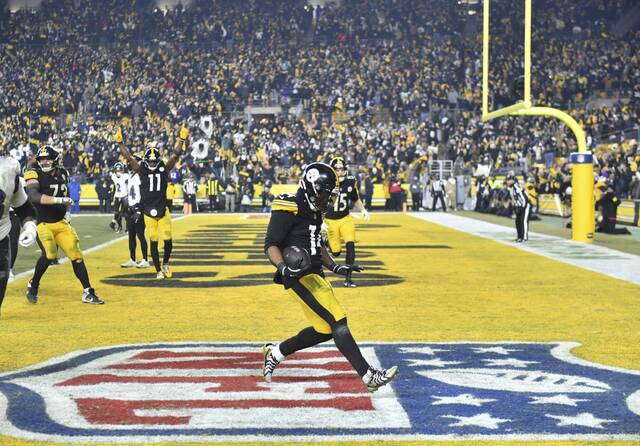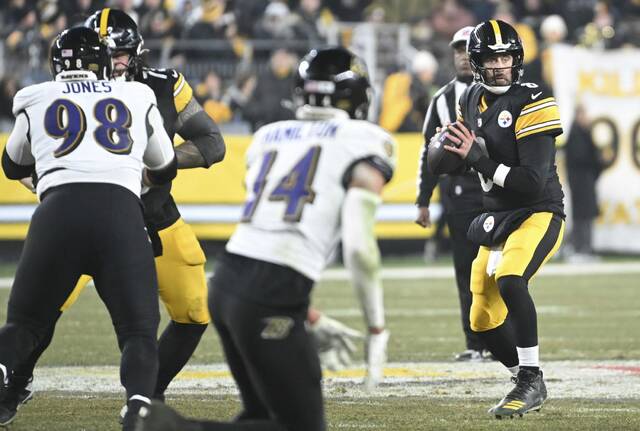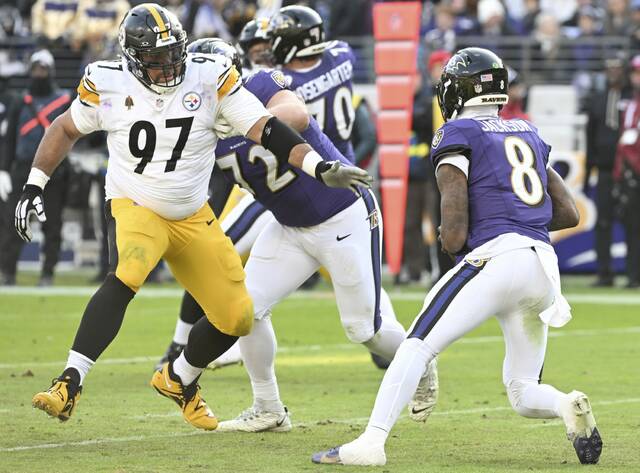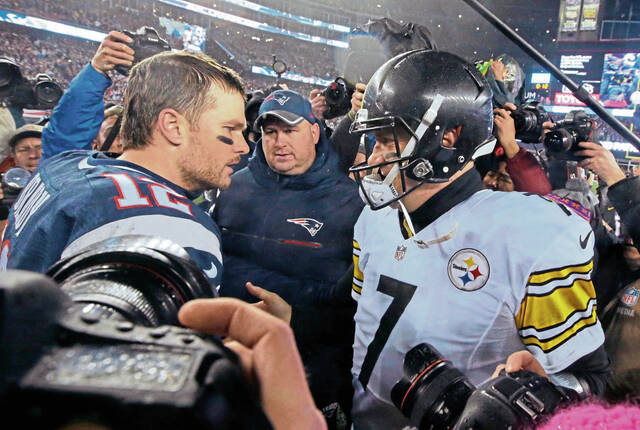In most years, it’s a futile effort to attempt reading the tea leaves during the Pittsburgh Steelers pre-draft press conference with general manager Kevin Colbert and head coach Mike Tomlin.
I’m not conspiratorial enough to think those two use that opportunity to intentionally float out misinformation.
OK, maybe on occasion.
But generally, I just think both men try to get through the exercise while giving away as little actual information as possible.
And I think they like to touch as many bases as they can. So that when they do draft a player on Thursday night in the first round … or trade out of it … or trade up, they can tell us that they made some sort of reference along the way that we all should’ve seen as a bright, flashing road sign as to what their plan was.
Well, if that last part is true, then Steelers fans who want to see the franchise draft a running back in the first round this week got a mixed bag of smoke signals.
During 2021’s edition of the annual press gathering (and it was a real, in-person Q&A event for the first time in over a year) at Heinz Field, Colbert acknowledged that the Steelers have problems with their ground game. But he wanted us all to know that the issues weren’t limited to the running back room.
“You look at the running game, obviously you’ve got to start up front, and then you’ve got to look at the runners themselves,” Colbert said. “You’re never going to leave any part of the offense out. The quarterbacks, the receivers. It’s a collective effort. We have some challenges up front because we don’t have the same offensive line that we had last year.”
Based on how the offensive line blocked in the run game last season, maybe that’s a good thing. The Steelers finished dead last in rushing at 84.4 yards per game.
Yet at that same media gathering, Tomlin seemed to brace Steelers fans for the notion that the club may not address the run game in any area with a pick in the first round.
“Improvements in the running game go beyond just the acquisition of additional players,” Tomlin said. “We’re capable of performing better than we have, players aside. Schematics, formations, the things that we do to give ourselves a strategic advantage need to be improved. (Those areas are) some of the things that we’re working on.”
So, if you are someone like me who is rooting for Alabama’s Najee Harris or Clemson’s Travis Etienne to slip on a Steelers jersey sometime late Thursday night, those quotes sound ominous.
Until you get to one from Colbert that seemed to dismiss the notion that running backs should be devalued in the draft process.
That’s a big point of contention with the NFL analytics community, draft prognosticators and capologists. Most of them tend to believe that, in modern football, running back success is a function of how the line blocks, the play calling, and how the passing game sets up the run — not so much the running back’s talents individually.
Not to mention the considerable attrition rate at the position.
When it comes to busting your salary cap in free agency, I get it. But when you can get a good running back — young, fresh, and on a cheap entry-level contract — I say, go for it.
It sounds like Colbert agrees.
“I don’t think you can ever underestimate the value of a quality player at any position, and running back is no different,” Colbert said. “I understand that the game has changed. It’s a more horizontal game than it is a vertical game. People don’t play traditional football as really (Tomlin) and I grew up with — two-back sets and power games and so forth.
“But if you have a dynamic player at any position, that player should make a difference. Running back is no different. I think if you look at the Hall of Fame runners, most of those guys were taken in high rounds. I don’t ever place that value high or low on a given position. I base it on who the player is and what that player can do to help us.”
To Colbert’s point, consider this stat. There were 46 seasons between the drafting of Franco Harris in the first round of 1972 and the departure of Le’Veon Bell after 2017. Twenty-five times, the Steelers team leader in rushing was a player originally drafted in the first round (Franco Harris 12, Tim Worley 1, Jerome Bettis 8, Rashard Mendenhall 3, DeAngelo Williams 1). Then add on four more years for Bell who was a second-rounder in 2013, if you like.
The Steelers got away from that pattern the last three seasons, parsing the run game between the likes of James Conner, Benny Snell and Jaylen Samuels over the last three years. But they have finished 32nd, 29th and 31st in rushing during that time.
So maybe it’s time to reinvest in the position. Colbert and Tomlin just gave us some lip service as to why they might or might not.
Consider me among the batch rooting for the former.
If Colbert was preemptively justifying why the team ends up taking a running back in the first round — or why they leave one on the board — I think he just made a much more compelling case for taking one.









